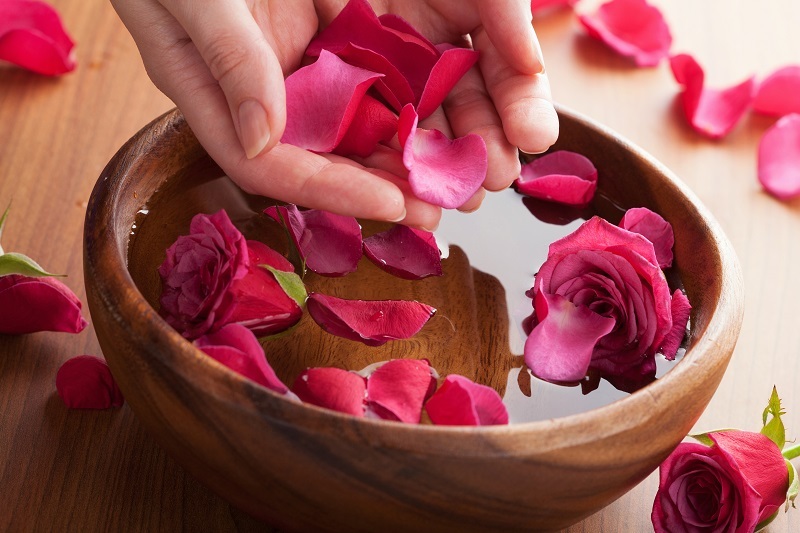Mastering the Art of Orchid Care
Posted on 17/06/2025
Mastering the Art of Orchid Care
Orchids are one of nature's masterpieces, gracing our homes and gardens with their intricate beauty and elegance. Yet, for many, these stunning blooms are shrouded in mystery and myths about their care. Whether you're a beginner or an experienced grower, understanding the essentials of orchid care will help you cultivate healthy, thriving plants that bloom year after year.

Understanding Orchids: The Basics
Orchids are not just beautiful--they're also incredibly diverse. With over 25,000 species and 100,000 hybrids, mastering orchid care requires a basic understanding of their biology and preferences.
- Epiphytic Orchids: These grow on trees in rainforests, drawing moisture and nutrients from the air.
- Terrestrial Orchids: These grow in the ground, more like typical houseplants.
- Popular Genera: Phalaenopsis (Moth Orchid), Cattleya, Dendrobium, and Oncidium are top choices for beginners.
Why People Love Orchids
Orchids are cherished for their long-lasting blooms, unmatched variety, and unique structures. Studies have even shown that having orchids at home can improve mood and air quality!
Key Elements of Successful Orchid Growing
If you want to master orchid care, you'll need to provide the right conditions tailored to your orchid variety. Let's explore each in detail.
The Right Light for Your Orchid
Orchids thrive in bright, indirect sunlight. Too little light results in weak growth and poor flowering, while too much can scorch leaves.
- Placing your orchid near an east-facing window is ideal.
- For Phalaenopsis orchids, aim for filtered morning light.
- If using artificial lights, choose full-spectrum LED or fluorescent grow lights placed 8-12 inches above the plant.
- Leaves should appear bright green. Dark green leaves indicate insufficient light, while yellowish green can mean too much.
Proper Watering Techniques
Overwatering is the most common cause of orchid failure. Orchids dislike "wet feet," so mastering your watering regime is crucial for orchid plant health.
- Generally, water once a week in winter and twice in summer.
- Allow the potting medium to dry slightly between watering--never let your orchid sit in water!
- Use room-temperature, distilled or rainwater if possible, as tap water can contain harmful salts.
- Water early in the day to allow the plant time to dry before nightfall.
- If unsure, stick your finger about an inch into the medium; if dry, it's time to water.
Humidity and Air Circulation
Orchids crave humidity, especially during the growing season. Most thrive at humidity levels between 40% and 70%.
- Set your orchid pots atop a tray filled with pebbles and water (water just below the top of the pebbles).
- Use a room humidifier or periodically mist your orchids.
- Ventilation is just as important--ensure good air movement to prevent mold and disease.
Choosing the Best Potting Media for Orchids
Unlike most houseplants, orchids don't thrive in regular soil. To properly care for orchids, use specialty potting mixtures that provide drainage and airflow.
- Bark mixes: Ideal for Phalaenopsis, Cattleya, and most epiphytes.
- Sphagnum moss: Good for retaining moisture, best for younger plants or those requiring more water.
- Charcoal, perlite, and coconut husk: Often added to improve drainage and prevent rot.
Repotting frequency: Orchids generally need to be repotted every 1-3 years, or when the medium breaks down, roots overgrow the pot, or the plant stops thriving.
Fertilizing for Lush Growth
To truly master the art of orchid care, consistent but careful fertilizing is key. Use fertilizers designed for orchids for best results.
- Use a balanced orchid fertilizer (20-20-20) every two weeks when the plant is actively growing and monthly during rest periods.
- "Weakly, weekly" is a favorite rule--dilute fertilizer to one-quarter of the recommended strength for each watering.
- Flush the potting mix with water monthly to remove any salt buildup.
Common Orchid Problems and Solutions
Dealing With Pests and Diseases
Even with diligent care, orchid problems can occur. Early detection and prompt action are your best defenses.
- Mealybugs and scale insects: Look for soft, cottony masses and hard bumps on leaves. Treat with rubbing alcohol swabs or insecticidal soap.
- Aphids and spider mites: Increased humidity and misting can deter them. For infestations, rinse plants and treat with insecticidal soap.
- Root rot and leaf spots: Most often a result of overwatering or poor air circulation. Remove affected tissue and improve growing conditions.
- Fungal and bacterial infections: Use sterilized tools and fungicides as necessary.
Encouraging Re-Blooming
One of the joys--and frustrations--of orchid cultivation is getting reblooms. Follow these expert tips:
- Continue routine care even when the orchid isn't blooming.
- After flowers drop, trim the flower spike back to a viable node to stimulate a new spike (works for Phalaenopsis orchids).
- Provide a period of cooler night temperatures (55-65?F/13-18?C) for a few weeks to trigger blooming cycles.
- Be patient--some orchids only bloom once a year, while others (like Phalaenopsis) bloom for months and can rebloom several times.
Orchid Care Tips for Every Season
Spring and Summer
Growth season! Most orchids are actively putting out new leaves and roots.
- Increase watering and feeding frequency as orchids grow faster.
- Watch for signs of pests as warmer weather can encourage infestations.
- Gently repot if roots are crowded or getting out of hand.
Fall and Winter
Many orchids enter a resting or dormant phase, requiring less water!
- Reduce frequency of watering; never let roots stay soggy in cooler months.
- Fertilize monthly or less often.
- Move orchids away from cold drafts and ensure leaves are not touching cold windowpanes.
- Provide supplemental light if natural daylight decreases significantly.
Advanced Orchid Care Techniques
Special Repotting Tricks
Learning how to repot orchids without damaging them is a valuable skill. Here are some pro tips:
- Water your orchid the day before to soften the roots.
- Gently remove the plant and shake away old potting media; trim dead or rotted roots with sterile scissors.
- Place in new media, make sure roots are positioned naturally--never bent or forced.
- Do not fertilize immediately after repotting; let your orchid settle first.
Propagation for Ambitious Growers
If you're ready to take orchid care to the next level, try propagation!
- Division: Works best with sympodial orchids like Cattleya and Dendrobium. Separate healthy back bulbs with roots attached.
- Keiki (baby plant) removal: Some orchids, such as Phalaenopsis, produce offshoots called keikis. Allow roots to grow 2-3 inches before gently removing and potting up.
- Seed propagation: Very advanced--requires special sterile conditions and lots of patience!
Orchid Care: Myths vs. Reality
There's a lot of misinformation out there when it comes to orchid plant care. Let's debunk three major myths:
- Myth: Orchids are difficult houseplants.
Reality: With a few basics on their environment, most orchids are no harder to grow than any other houseplant! - Myth: You should always cut off an orchid's roots that grow above the pot.
Reality: These aerial roots help orchids breathe--leave them be! - Myth: Orchids need to be watered with ice cubes.
Reality: Cold water can shock roots. Use room-temperature water and water thoroughly instead.
Frequently Asked Questions About Orchid Care
- What is the best orchid for beginners?
Phalaenopsis (moth orchids) are highly recommended for their resilience and steady flowering cycle. - Why are my orchid's leaves limp or yellow?
Usually caused by overwatering--allow media to dry slightly before watering again. - How much light do orchids need?
Bright, indirect light is perfect--avoid harsh midday sun which can scorch leaves. - What is the ideal temperature for orchids?
Most thrive between 65-75?F (18-24?C) during the day and 55-65?F (13-18?C) at night.

The Lifelong Rewards of Mastering Orchid Care
Mastering the art of orchid care brings immense rewards. Watching your orchid thrive, rebloom, and sometimes produce new plants is a source of wonder and pride. The journey offers lessons in patience, observation, and the beauty of nurturing life.
Remember: Orchids thrive when you pay attention to their subtle signals. Observe, adjust, and enjoy! Soon, these intriguing plants will no longer seem mysterious, but rather a delightful part of your home and gardening passion.
Conclusion: Your Path to Orchid Mastery
Whether you're aiming for healthy orchids with spectacular blooms or simply want to keep your first plant alive, the secrets of success are simple: light, water, humidity, proper potting, and a touch of patience. If you provide these fundamentals, your orchids will reward you with grace and beauty for years to come.
Start with a species that matches your home conditions, follow these comprehensive orchid care tips, and you'll swiftly move from novice to adept, truly mastering the art of orchid care.
Happy growing! If you have your own orchid care tips or questions, share them below and join the ever-growing community of orchid enthusiasts worldwide.
Latest Posts
Unveiling Your Birth Flower and Its Hidden Secrets
Exploring the significance of birth month flowers
Explore the Top 5 Flowers to Gift on Valentine's Day





